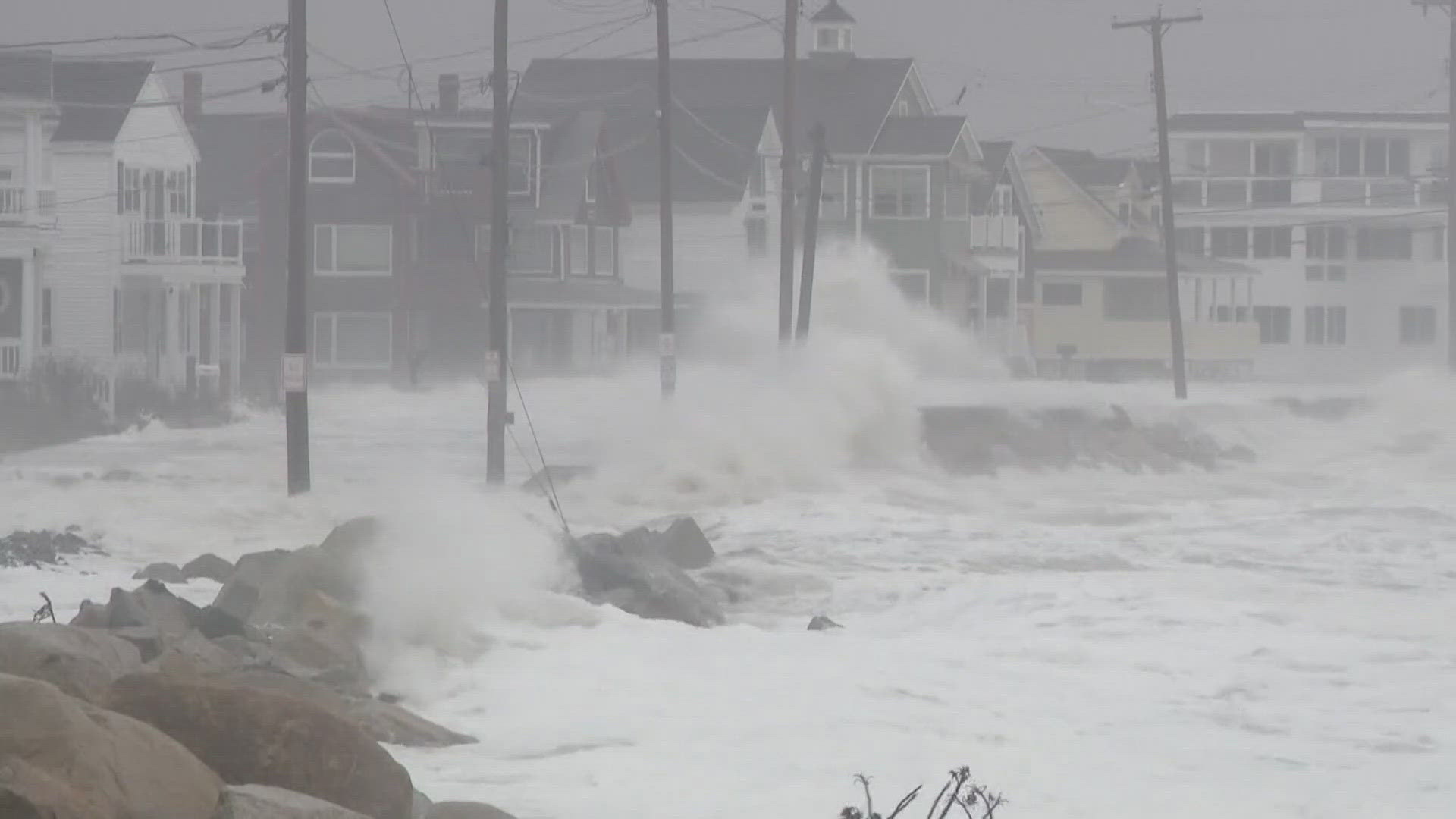PORTLAND, Maine — All we have to do is think back to those three big storms, one in December and two in January, to realize winters in Maine are, indeed, changing.
More than six months later, and many parts of the state are still working to recover.
Climate change is a known factor in the growing severity of storms, and it's also making weather forecasting a lot more difficult, according to national weather officials.
“Storms that have more moisture, more intensity, so there are going to be more intense that happen more frequently, so more 'black swans,'” Zach Taylor, acting warning coordination meteorologist for the National Weather Service, said.
There are more than 100 local weather offices spread out across the country. Taylor said extreme weather events are becoming more common because of climate change.
“It shouldn’t probably be classified as a 'black swan,' and that begs the question: Is that becoming what we are now considering a more normal expected extreme event, or at least the spread of potential extremes broadens to include some of these events we would otherwise consider to be off the scale?” Taylor said.
A "black swan" event is something extreme that rarely happens. But Taylor said climate change is creating a new normal where people are experiencing storms so severe they’ve never seen anything like it. But what if we are seeing multiple "black swans" in the same week, like we saw back in January?
“Some of these events are very unprecedented and something that others haven’t seen in their generation or before that. We’re talking about events that go back 50, 100 years that there is no record of. So, it’s hard to put into perspective, sometimes, the extreme nature of events if no one has ever witnessed it or observed it or experienced it,” Taylor said.
Anyone living in Maine can appreciate how difficult it is to accurately predict winter storms. Taylor said things have shifted to a warmer climate, making accuracy a bigger challenge.
“Some of the changes that we are seeing with some of these systems with, before maybe it was more classic conceptual model winter storms of the Northeast, but now we are adding new things to it like more inland warmer temperatures which brings more inland rain and those impacts,” Taylor said.
Taylor also said there are more inland flood warnings, but there’s also a big impact on the coastline, thanks to increased storm frequency.
“And then the coastline and the surge could be an impact as well and could be a repeating effect of those that are changing how the weather is impacting the infrastructure,” Taylor said.
We're seeing that play out locally, for example, with seawalls that were destroyed after the extreme storms last winter. There are now holes in those barriers on Beach Avenue in Kennebunk.
“The frequency, the intensity of these winter storms, that’s something we are going to have to grapple with,” Taylor said.
One thing forecasters key in on are anomalies, Taylor said. It’s a way of looking back at the past to predict the future. He said that’s getting harder to do with climate change.
“The anomalies of whether it’s moisture or the strength of the low-pressure system, and that kind of puts a little bit of context and helps raise the flag from a forecasting side, like, 'OK, now we need to really start paying attention, because these anomalies are off the chart,'” Taylor said.
Storms are getting worse because of a warmer climate, allowing the atmosphere to hold more moisture. But there’s also the frequency of a stagnant weather highway. Storms are now allowed to track over the same areas, bringing devastating flooding. Taylor said having a weather-ready nation that knows how to respond to weather hazards is key.
“I think it’s just about knowing how to get reliable information and also knowing what to do when those really important weather warnings come out,” Taylor said.
But Taylor said walking the line between getting the word out and not being an alarmist is at the core of what the National Weather Service does.
“Having a source of trusted information, one that is going to provide a balanced view of the weather and what’s expected, whether that’s a trusted source of broadcast weather or the NWS,” Taylor said.
With the number of extreme storms rising, it’s easy for people in the community to get “warning fatigue” and tune out critical weather information. Taylor said there’s a solution for that.
“You have to dig a little deeper beyond the warning text," Taylor explained. "There are details in there that provide differences between a generic severe thunderstorm warning versus one that has higher level impacts."
Staying informed and getting important weather information will continue to be a challenge as climate change makes things worse.

